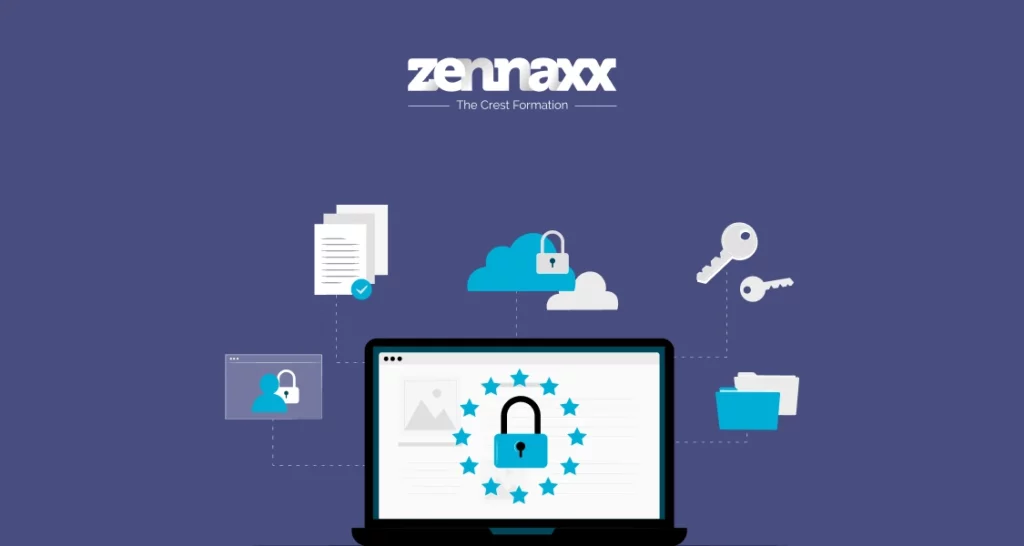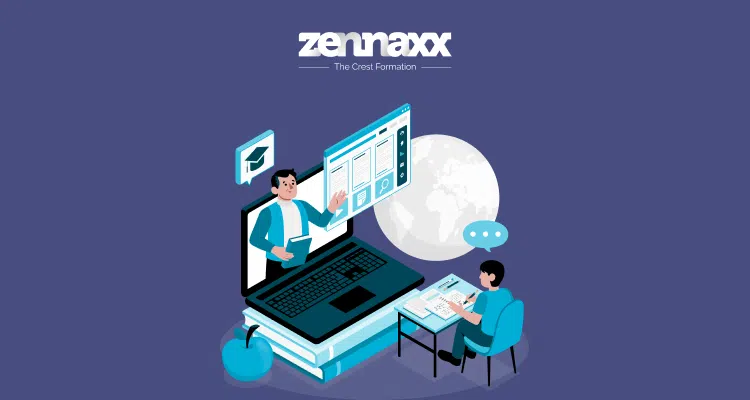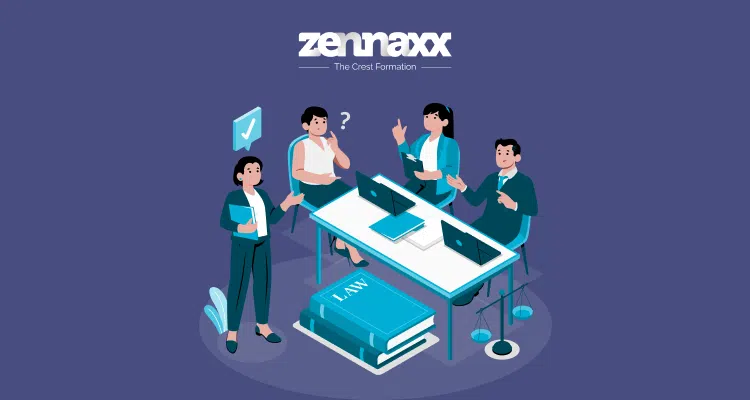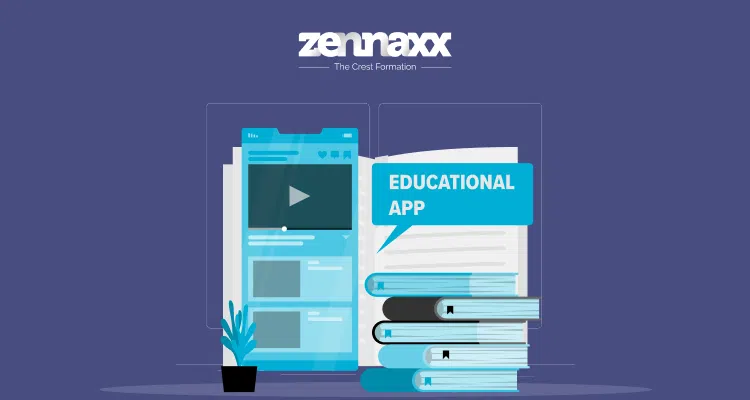Companies always take a walk towards competition in the market, and nothing is better than working out on your applications. This is where prioritizing Modernized Legacy systems comes into play.
This approach allows businesses to safeguard their outdated applications. Without modernizing legacy applications, an organization cannot innovate and grow.
Additionally, legacy applications are less agile and scalable, causing inefficiencies and delays.
With an intelligent approach to legacy modernization, organizations can solve problems and improve user experience.
This guide discusses these benefits and offers guidance on modernizing legacy applications.

About Legacy Applications
The term legacy application refers to computing systems used by organizations for a long time.
These applications or systems were likely developed with outdated technologies, architectures, and programming languages, which may now be outdated and not compatible with current trends and technologies.
Although crucial to enterprise operations, legacy applications can present challenges when technology advances.
What are the Challenges of Legacy Applications?
Increasingly outdated legacy systems pose many challenges to organizations, some of which are outlined below:
- Outdated Technology : Legacy programs consist of older frameworks and programming languages. There are no advanced technologies and no innovations compatible with these systems.
- Maintenance : As technology advances, developers skilled in outdated languages and frameworks are harder to find. This results in increasing development time and maintenance costs.
- Scalability : Legacy applications may have trouble handling increased workloads, making them less responsive and performing worse.
- Integration : Integrating an older application into a more modern API, system, and technology can be complex and error-prone.
- Security : The vulnerability of outdated technologies enables cyberattacks against legacy applications.
- User Experience : Inefficient features and poor user interfaces could reduce the satisfaction and efficiency of users.
Why Do You Need to Modernize Your Legacy Systems?
Your business needs to have a reliable system available all the time so you can respond to user needs at any time of the day. It’s impossible to predict when user spikes will occur on your system.
A system or application that does not cater to the needs of its users will directly affect its return on investment.
The goal of modernizing legacy applications is to stay relevant to your target users’ needs and stay ahead of your competitors. There are several advantages to leveraging legacy application modernization services:
- Competitiveness : Businesses need to keep up with technological changes to remain competitive. Keeping legacy apps up to date allows them to use the latest technology and offer excellent functionality.
- Achieving efficiency : Automating procedures and reducing manual workarounds make modern software more efficient.
- Affordability : Maintenance and support costs for legacy applications can be high. Modernization can reduce costs over the long run by optimizing resources and reducing downtime.
- Security : A modernized IT infrastructure can introduce new security features and address security flaws, ensuring the protection of sensitive data.
- Agility and Flexibility : Modernized applications can respond to changing client requirements, corporate policies, and market conditions.
- User Experience : Inefficient features and poor user interfaces could reduce the satisfaction and efficiency of users.
Want to Automate Your Business Process With a Software Solution?
Zennaxx, a leading software development firm in Canada, has delivered 700+ bespoke solutions spanning various industries.
Step-by-step strategy for modernizing legacy applications
Planning and assessment
The first step is to assess and plan. When you check your business requirements, determine legacy applications and identify critical legacy systems. This focuses on your modernization efforts and the foundation for future success.
Achieving optimal results requires alignment with business goals and effective resource allocation. This is an essential step in reengineering legacy applications.
Strategies for migration
Migration strategies aim to transition legacy applications into modernized systems. Here are five standard methods for making informed decisions.
- Re-hosting : Changing the application’s hosting infrastructure without significantly changing its code or architecture.
- Replatforming : This strategy optimizes performance and leverages features specific to a platform.
- Refactoring : Reorganizing a codebase to make it more scalable and designed to meet modern standards.
- Rebuilding : Building from scratch with modern technology and maintaining functionality.
- Retiring : Removing obsolete applications and simplifying IT infrastructure to reduce costs.
Strategies differ in their benefits and considerations. If you carefully evaluate your needs and goals, you can decide which approach would be best for your modernized legacy systems.
Technology Stack Selection
Modernizing your applications requires the right technology stack. A chosen framework, language, and technology combination makes your application more scalable, maintainable, and compatible.
Selecting your technology stack is integral to your modernization journey, so don’t overlook it.
Design and Architecture
Modernizing legacy applications requires careful consideration of architecture and design. A successful application depends on its structure, behavior, security, and effectiveness.
Considerations such as data design, the architecture of a system, and the user experience of a system are all crucial. Modernized legacy systems must be scalable and maintainable, as well as architecture and design.
Migration and transformation of data
Data migration and transformation are crucial aspects of modernizing legacy applications. To fit the new application’s structure, the data must be transferred, validated, and transformed.
The data transition must be planned, analyzed, and tested carefully to ensure its integrity. Additionally, you should establish data governance and involve all stakeholders to ensure effective data migration and transformation.
Quality assurance and testing
The testing and quality assurance phase begins after reengineering, migrating, selecting technologies, and constructing the architecture. Modernizing legacy apps to be reliable, standards-compliant, and user-friendly is critical.
To conduct tests, you need to plan them, set up the environment, define the test cases, run performance and functional tests, secure those tests, and automate them whenever possible.
The management of defects and their reporting are also essential. Identifying issues and minimizing risks are necessary for a successful modernization with adequate testing.
End-users will be able to access the updated application through the production environment. Rollout and deployment involve several key elements, including:
- Planned release
- Setting up the production environment
- Optimal configuration
- Installing
- Migration of data
- Testing
- Testing of user acceptance (UAT)
- Plan for the rollout
- Support & Training
- Observation and monitoring
- Evaluation after deployment
The deployment and rollout of modernized legacy applications must be smooth and successful to maximize their impact and benefits.
Post-Migration Maintenance and Support
The final step in implementing a modernized application is creating an incident management process for resolving post-migration problems.
Key elements include defining escalation and response procedures and establishing a dedicated support team. A ticketing system can also be implemented to track and focus on issues.
Maintaining and supporting the modernized application is crucial to ensuring its long-term reliability and performance.

Future Trends in Application and Cloud Modernization
As technology advances, so does the landscape of app and cloud modernization. The following are some of the latest trends in app modernization and cloud modernization:
- Microservices and Serverless Architectures : With a microservices architecture, software applications are now separated into smaller, more manageable components that can be developed, scaled, and individually deployed. With serverless architecture, infrastructure administration is abstracted away, freeing developers to focus on code alone.
- Containerization and Kubernetes : Containers provide consistent environments across many apps on many platforms. Kubernetes simplifies the deployment, scaling, and maintenance of containerized applications.
- Hybrid Cloud and Multi-Cloud Strategy : Organizations adopt hybrid cloud platforms that combine on-premises resources with public and private clouds. Using services from different cloud providers prevents vendor lock-in and enhances reliability.
- AI and Machine Learning Integration : AI and machine learning capabilities allow users to enjoy personalized and predictive apps and more automated processes.
- Low-Code/No-Code Development : These platforms allow both non-developers and developers to create applications using little to no code.
- Edge Computing : The rise of IoT devices has made edge computing more significant. The data processing can be done closer to its source, which reduces latency and improves real-time capabilities.
- Cloud-Native Security : When data and applications migrate to the cloud, security becomes more critical. Cloud-native security solutions provide real-time threat detection and automated solutions.
- Quantum Computing : While few people are aware of quantum computing, quantum computing can transform cloud computing by providing solutions to challenging problems beyond the scope of classical computing.
Step-by-step strategy for modernizing legacy applications
Planning and assessment
The first step is to assess and plan. When you check your business requirements, determine legacy applications and identify critical legacy systems. This focuses on your modernization efforts and the foundation for future success.
Achieving optimal results requires alignment with business goals and effective resource allocation. This is an essential step in reengineering legacy applications.
Strategies for migration
Migration strategies aim to transition legacy applications into modernized systems. Here are five standard methods for making informed decisions.
- Re-hosting : Changing the application’s hosting infrastructure without significantly changing its code or architecture.
- Replatforming : This strategy optimizes performance and leverages features specific to a platform.
- Refactoring : Reorganizing a codebase to make it more scalable and designed to meet modern standards.
- Rebuilding : Building from scratch with modern technology and maintaining functionality.
- Retiring : Removing obsolete applications and simplifying IT infrastructure to reduce costs.
Strategies differ in their benefits and considerations. If you carefully evaluate your needs and goals, you can decide which approach would be best for your modernized legacy systems.
Technology Stack Selection
Modernizing your applications requires the right technology stack. A chosen framework, language, and technology combination makes your application more scalable, maintainable, and compatible.
Selecting your technology stack is integral to your modernization journey, so don’t overlook it.
Design and Architecture
Modernizing legacy applications requires careful consideration of architecture and design. A successful application depends on its structure, behavior, security, and effectiveness.
Migration and transformation of data
Data migration and transformation are crucial aspects of modernizing legacy applications. To fit the new application’s structure, the data must be transferred, validated, and transformed.
The data transition must be planned, analyzed, and tested carefully to ensure its integrity. Additionally, you should establish data governance and involve all stakeholders to ensure effective data migration and transformation.
Quality assurance and testing
The testing and quality assurance phase begins after reengineering, migrating, selecting technologies, and constructing the architecture. Modernizing legacy apps to be reliable, standards-compliant, and user-friendly is critical.
To conduct tests, you need to plan them, set up the environment, define the test cases, run performance and functional tests, secure those tests, and automate them whenever possible.
The management of defects and their reporting are also essential. Identifying issues and minimizing risks are necessary for a successful modernization with adequate testing.
End-users will be able to access the updated application through the production environment. Rollout and deployment involve several key elements, including:
- Planned release
- Setting up the production environment
- Optimal configuration
- Installing
- Migration of data
- Testing
- Testing of user acceptance (UAT)
- Plan for the rollout
- Support & Training
- Observation and monitoring
- Evaluation after deployment
The deployment and rollout of modernized legacy applications must be smooth and successful to maximize their impact and benefits.
Post-Migration Maintenance and Support
The final step in implementing a modernized application is creating an incident management process for resolving post-migration problems.
Key elements include defining escalation and response procedures and establishing a dedicated support team. A ticketing system can also be implemented to track and focus on issues.
Maintaining and supporting the modernized application is crucial to ensuring its long-term reliability and performance.

Future Trends in Application and Cloud Modernization
As technology advances, so does the landscape of app and cloud modernization. The following are some of the latest trends in app modernization and cloud modernization:
- Microservices and Serverless Architectures : With a microservices architecture, software applications are now separated into smaller, more manageable components that can be developed, scaled, and individually deployed. With serverless architecture, infrastructure administration is abstracted away, freeing developers to focus on code alone.
- Containerization and Kubernetes : Containers provide consistent environments across many apps on many platforms. Kubernetes simplifies the deployment, scaling, and maintenance of containerized applications.
- Hybrid Cloud and Multi-Cloud Strategy : Organizations adopt hybrid cloud platforms that combine on-premises resources with public and private clouds. Using services from different cloud providers prevents vendor lock-in and enhances reliability.
- AI and Machine Learning Integration : AI and machine learning capabilities allow users to enjoy personalized and predictive apps and more automated processes.
- Low-Code/No-Code Development : These platforms allow both non-developers and developers to create applications using little to no code.
- Edge Computing : The rise of IoT devices has made edge computing more significant. The data processing can be done closer to its source, which reduces latency and improves real-time capabilities.
- Cloud-Native Security : When data and applications migrate to the cloud, security becomes more critical. Cloud-native security solutions provide real-time threat detection and automated solutions.
- Quantum Computing : While few people are aware of quantum computing, quantum computing can transform cloud computing by providing solutions to challenging problems beyond the scope of classical computing.
Step-by-step strategy for modernizing legacy applications
Planning and assessment
The first step is to assess and plan. When you check your business requirements, determine legacy applications and identify critical legacy systems. This focuses on your modernization efforts and the foundation for future success.
Achieving optimal results requires alignment with business goals and effective resource allocation. This is an essential step in reengineering legacy applications.
Strategies for migration
Migration strategies aim to transition legacy applications into modernized systems. Here are five standard methods for making informed decisions.
- Re-hosting : Changing the application’s hosting infrastructure without significantly changing its code or architecture.
- Replatforming : This strategy optimizes performance and leverages features specific to a platform.
- Refactoring : Reorganizing a codebase to make it more scalable and designed to meet modern standards.
- Rebuilding : Building from scratch with modern technology and maintaining functionality.
- Retiring : Removing obsolete applications and simplifying IT infrastructure to reduce costs.
Strategies differ in their benefits and considerations. If you carefully evaluate your needs and goals, you can decide which approach would be best for your modernized legacy systems.
Technology Stack Selection
Modernizing your applications requires the right technology stack. A chosen framework, language, and technology combination makes your application more scalable, maintainable, and compatible.
Selecting your technology stack is integral to your modernization journey, so don’t overlook it.
Design and Architecture
Modernizing legacy applications requires careful consideration of architecture and design. A successful application depends on its structure, behavior, security, and effectiveness.
Migration and transformation of data
Data migration and transformation are crucial aspects of modernizing legacy applications. To fit the new application’s structure, the data must be transferred, validated, and transformed.
The data transition must be planned, analyzed, and tested carefully to ensure its integrity. Additionally, you should establish data governance and involve all stakeholders to ensure effective data migration and transformation.
Quality assurance and testing
The testing and quality assurance phase begins after reengineering, migrating, selecting technologies, and constructing the architecture. Modernizing legacy apps to be reliable, standards-compliant, and user-friendly is critical.
To conduct tests, you need to plan them, set up the environment, define the test cases, run performance and functional tests, secure those tests, and automate them whenever possible.
The management of defects and their reporting are also essential. Identifying issues and minimizing risks are necessary for a successful modernization with adequate testing.
End-users will be able to access the updated application through the production environment. Rollout and deployment involve several key elements, including:
- Planned release
- Setting up the production environment
- Optimal configuration
- Installing
- Migration of data
- Testing
- Testing of user acceptance (UAT)
- Plan for the rollout
- Support & Training
- Observation and monitoring
- Evaluation after deployment
The deployment and rollout of modernized legacy applications must be smooth and successful to maximize their impact and benefits.
Post-Migration Maintenance and Support
The final step in implementing a modernized application is creating an incident management process for resolving post-migration problems.
Maintaining and supporting the modernized application is crucial to ensuring its long-term reliability and performance.

Future Trends in Application and Cloud Modernization
As technology advances, so does the landscape of app and cloud modernization. The following are some of the latest trends in app modernization and cloud modernization:
- Microservices and Serverless Architectures : With a microservices architecture, software applications are now separated into smaller, more manageable components that can be developed, scaled, and individually deployed. With serverless architecture, infrastructure administration is abstracted away, freeing developers to focus on code alone.
- Containerization and Kubernetes : Containers provide consistent environments across many apps on many platforms. Kubernetes simplifies the deployment, scaling, and maintenance of containerized applications.
- Hybrid Cloud and Multi-Cloud Strategy : Organizations adopt hybrid cloud platforms that combine on-premises resources with public and private clouds. Using services from different cloud providers prevents vendor lock-in and enhances reliability.
- AI and Machine Learning Integration : AI and machine learning capabilities allow users to enjoy personalized and predictive apps and more automated processes.
- Low-Code/No-Code Development : These platforms allow both non-developers and developers to create applications using little to no code.
- Edge Computing : The rise of IoT devices has made edge computing more significant. The data processing can be done closer to its source, which reduces latency and improves real-time capabilities.
- Cloud-Native Security : When data and applications migrate to the cloud, security becomes more critical. Cloud-native security solutions provide real-time threat detection and automated solutions.
- Quantum Computing : While few people are aware of quantum computing, quantum computing can transform cloud computing by providing solutions to challenging problems beyond the scope of classical computing.
Planning software development?
Ready to elevate your software projects? Partner with us for seamless software solutions.
Legacy Modernization Examples
Legacy systems, once the backbones of operations, can become obstacles to progress and efficiency. The success stories of businesses that have successfully modernized legacy systems illustrate the power of legacy system modernization. Modernization can offer substantial opportunities and advantages to any company, no matter its size or industry.
Carhartt
An American apparel company partnered up with IBM to update its legacy applications. By streamlining processes and improving employee productivity, this modernization effort freed up staff for strategic initiatives.
Claro
Claro, a primary telecommunications provider in Latin America, chose Wovenware to replace paper-based legacy system workflows with automated ones. Besides improving customer experience, modernized Legacy systems increased productivity and decreased licensing costs.
Equinix
As one of the world’s top data center companies, Equinix decided to accelerate the development of new features. By modernizing its legacy system, Equinix’s development team became more agile, reliable, and faster.
Goldman Sachs
The legacy system of this global financial services company had a complex toolchain that impeded execution speed. Modernizing legacy systems simplified workflows, optimized developer efficiency, and improved customer satisfaction.
Quantum Aviation Solutions
An Atlanta-based company specializing in baggage handling systems for airlines has transformed its legacy Java application into a web application. As a result of the modernized software, the product is more mobile, scalable, and cross-platform compatible, thereby increasing productivity.
Conclusion
Business owners must adopt application modernization to remain agile, competitive, and effective. Success and future growth require adapting, evolving, and accepting changes. Investing in application modernization services can serve as a strategic business decision.
An organization that doesn’t adapt to a technologically driven society risks being left behind. Modernization services help build a future-proof, efficient, and optimized technical ecosystem. Modernized Legacy systems put your organization on a path of innovation, success, and development. By updating your software, you’re making a difference!
Frequently Asked Questions (FAQs)
- WHAT ARE THE 4 PILLARS OF MODERNISATION?
- Legacy application modernization revolves around the four crucial pillars: assessment, migration, modernization, and optimization. Assessment: Assessment includes checking through existing legacy systems for functionality, reliability, and limitations. Migration: Migration means transferring data and applications to modern architectures. Modernization: Modernization means enhancing the application codebase, user interface, and features that meet the standard. Optimization: It means eliminating mistakes, monitoring, and making improvements to ensure efficiency and effectiveness.
- WHAT ARE THE THREE ESSENTIALS OF MODERNIZATION THEORY?
- Three essential aspects of modernization theory begin with re-platforming, re-hosting, or reengineering. The theory behind the approach is focused on detailed analysis, strategic planning, and execution for successful transformation.
- WHAT IS NECESSARY FOR MODERNIZATION?
- Adapting to requirements, successful application migration, and technology are the core of modernization. These play an essential role in taking the legacy modernization application to success.
- WHAT ARE THE POSITIVE EFFECTS OF MODERNIZATION?
- Modernizing legacy applications offers a range of positive impacts to business, which include excellent performance, scalability, and security. It allows companies to integrate with modern technology and work on boosting user experience with fewer maintenance costs.
- WHAT ARE THE PROBLEMS OF MODERNIZATION?
- Challenges that businesses face through modernization are integrating new technologies and losing functionality and reliability on the codebase. Keeping the balance between the present functionality and integrating advanced features poses another significant challenge.








